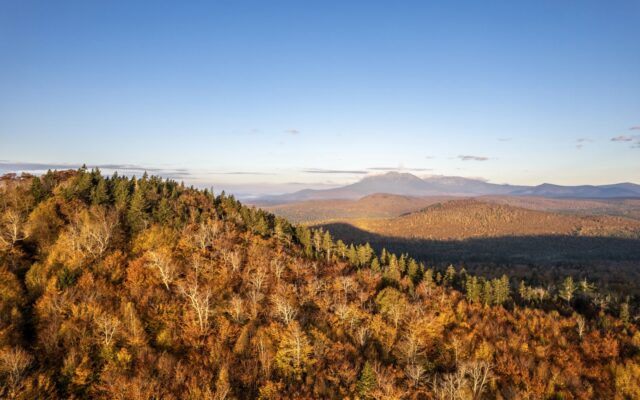
30K acres near Katahdin Woods and Waters will be returned to Penobscot Nation
By Susan Sharon, Maine Public
The Penobscot Nation and Trust for Public Land on Nov. 1 announced a plan to return nearly 30,000 forested acres in Maine back to the governance of the tribe.
The land represents a portion of what was taken from them in the 1800s, and it’s part of a larger effort to restore ancestral homelands to Indigenous stewardship.
The land near the Katahdin Woods and Waters National Monument is well forested and previously managed for industrial timber. It also contains more than 4,000 acres of wetlands and 53 miles of streams and rivers in the Penobscot River watershed. This is part of a larger area that is sacred to tribal culture and community.
“It’s reconnecting us to that traditional territory, in a way. We’re not getting that treaty land back but we’re at least getting closer,” said Chuck Loring, director of natural resources for the Penobscot Nation.
Loring is excited about stewarding wildlife habitat for bear, moose and salmon. Because of the parcel’s size, elevation and biological diversity, Loring said it will be important for mitigating the effects of climate change and will add to an existing network of conserved lands across 1.2 million acres.
The Trust for Public Land secured loans to purchase the property as an interim owner last year and is now working with the Penobscot Nation to raise $32 million to pay them off.
Once the project is completed, the land will be transferred without a conservation easement in a way that supports Indigenous self determination. The plan also calls for creation of a “much needed” southern point of access to the Katahdin Woods and Waters National Monument.
In a written statement, the Trust for Public Land said the move aligns with its commitment “to support Tribal nations and Indigenous communities in their efforts to recover, restore and protect their ancestral homelands.”
And Penobscot Nation Chief Kirk Francis said the tribe is “ecstatic for the opportunity … to conserve more land in the Katahdin region for our future generations.”
This article appears through a media partnership with Maine Public.